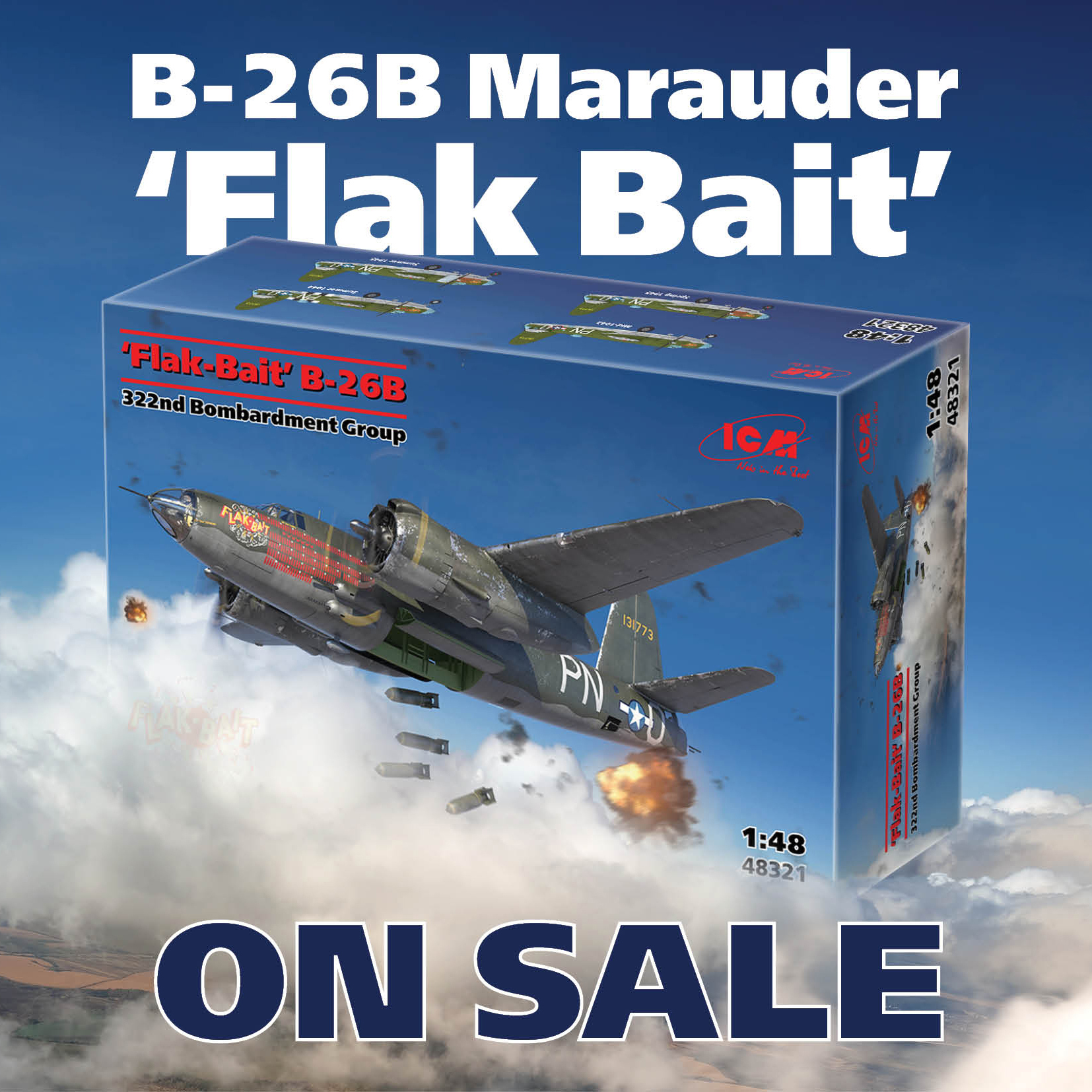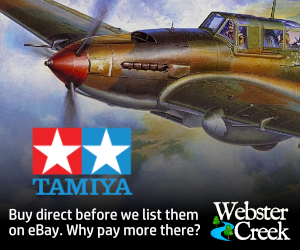
Background
The B-12 was a development of the Martin Model 123 and the B-10. The Model 123 was a private venture by the Glenn L. Martin first flying in February 1932. It offered several innovative design features including all metal airframe, enclosed crew positions, deep fuselage, and a retractable undercarriage. Both the Model 123 and B-10 were powered by Wright R-1820-19 Cyclone radial engines.
The Martin B-12A shared the extended wings of the B-10 with two Pratt & Whitney R-1690-11 Hornet radial engines. The subject of this kit: the B-12A had a combat range1,240 mi (2,000 km) with a fuel tank in the bomb bay. The range was exceptional for the time and its performance led to interest by several countries. As a result Martin produced export versions designated the Model 139 and Model 166. Twenty-five B-12’s were built for the USAAF.
Hard to believe looking at the shape of the B-10/B-12 that for a short time it was faster than many contemporary fighters of the time. The speed advantage did not last long with the pace of military aircraft development.




The Kit
This new B-12 1:72 scale kit from Special Hobby has been developed from the relatively new tool Azur/Frrom B-10 and Model 139/166. The Azur/Frrom kits were first released in 2020 [Scalemates]. Special Hobby states that this is the first time the B-12 has been released as an injected plastic kit. First impressions are of good and consistent raised and recessed detail. The corrugated effect on the upper decking of the fuselage is superb. You will not find any part numbers on the sprues, though the parts key in the instructions is more than adequate. As this was designed as a limited run kit, you will not find any location pins. Also, there is a little bit of flash here and there, so some parts will need a swipe with a sanding stick. A welcome inclusion is the unpainted photo etched [PE] fret. All the contents are contained in a top opening box.




Contents include:
- 5 x dark grey plastic sprues
- 3 x small clear plastic sprues.
- 1 x photo etched fret [not painted]
- 1 x decal sheet
- 1 x 16 page instructions


There are plastic parts to detail the pilot and rear crew position aft of the bomb bay. The rear gunner position appears to have some flight controls including a control wheel and a limited number of instruments. Both the pilot and rear gunner’s instruments have additional dial detail in the way of decals. Eleven plastic parts make up the pilot’s position and fourteen plastic parts make up the rear crew’s position. There is bare metal phot etched seat belts to add to the three sets of seats [pilot, gunner and navigator/radio operator. There are bulkheads included to prevent you seeing into the bomb bay and rearwards into the tail. There is further frame detail on the walls of the pilot and rear gunner’s position. The front gunner’s position just has two parts.






The extensive glazing is very well done. The plastic is crystal clear and the frame work is nicely done. There are an awful lot of glazing panels that will be challenging to mask. Fortunately, Special Hobby has produced a separate pre-cut paint mask set [M72008]. Also included on the clear plastic sprue are rather thick observation windows and a set of cover for the landing lights.




The kit designers took the unusual step, though for sound reasons to mould the fuselage with upper and lower halves. As mentioned in the background, the B-12 has a deep fuselage. A benefit of this approach is that the excellent detail on top off the fuselage is preserved as there is no seam line running through it. Another handy feature are the distinct areas where the two clear canopies are attached to the upper fuselage. The vertical tail surface is separate and you will find the rudder moulded into place. The tape detail over the ribs looks good. The hawk eyed amongst you might make out what looks like a raised ejector mark on either side of the rudder between the tape lines. These also appear on the elevators and the lower main wings. They are not ejector marks and feature if you look closely on photographs of the B-12. The rear fuselage cone is separate and made up from two-parts. At the front below the turret is a clear part forming the nose, which includes the bomb aimers window. There are three clear parts representing observation windows to fit into the lower fuselage. A partial wing spar is fitted just behind the pilot’s cockpit. This will hopefully aid the fitting of the wings.




The main wings are made up from four parts. Part of the engine nacelles are moulded on the lower wing. The corresponding upper nacelle fairing on the upper wings are separate. The upper fairings have alternative air inlets depending which marking option you go for. There are decals representing engine instruments fitted to the side of the nacelle facing the fuselage. The one-piece radial engines are nicely moulded and will look the part with some careful dry brushing. There is separate exhaust collector rings located at the rear of the engine. The engine covers are split into two parts. Be aware that there are alternate air intakes depending which marking option you select to model. To finish off there are separate exhaust pipes to fit. the props are both one piece, with thin well shaped blades. You will notice that the rail for the undercarriage actuation arm on the trailing edge of the right lower wing is missing. The broken part is safely contained in the bag, just need gluing back into position. The other rail was bent, though with some slight pressure it went back into place. The ailerons and flaps are moulded integrally with the wing. The representation of the ribbed detail on the control surfaces seems accurate when comparing with photographs. The horizontal tail wings are both one piece.




The undercarriage is a simple affair reflecting the real thing. The retraction rod is interesting. When the undercarriage is up the end of the rod extends past the trailing edge. Main wheels are two-piece. The main wheel bay has a separate part to form the roof, plus a partial bulkhead and a wheel well. So, there will not be any unwelcome view into the interior of the wing. Tailwheel is made up from two parts with a one piece wheel. All wheels have paint masks




The unpainted photo etched fret contains seat belts, aerials, hand rail [rear crew position] and anti-glare shield for the wing tip lights.
The decals are wrapped separately and are produced by Special Hobby. Colour density looks pretty good as does the registration. The red and white stripes on the rudder of all four options is thankfully included on the decal sheet.





There are four marking options and they include:
- B-12A No.111, 9th Bombardment Squadron,7th Bombardment Group, California, USA. 1935
- B-12A No.132, 31th Bombardment Squadron,7th Bombardment Group, California, USA. 1934
- B-12A No.143, 11th Bombardment Squadron,7th Bombardment Group, California, USA. 1937
- B-12A No.76, Air Corps Tactical School, Maxwell Field, Alabama, USA, 1937
Option 1 to 3 feature aircraft with pale blue fuselage and nacelles, with yellow wings and tail surfaces. Option 4 is left in natural metal overall. All the options have red and white painted rudders. Options 1 to 3 have nose art painted on both sides. Option 4 has a the No.76, Air Corps Tactical School badge painted below the front turret.



Instructions are in the form of a sixteen-page A-5 booklet. Illustrations are clear and there is additional supportive drawings illustrating the fit of certain parts. The paint and decal guide provides plan and side views of each of the four subjects.


M72008 – Paint Masks
Available separately is a very useful set of pre-cut paint masks. Useful in that there are many glass panels in the two canopies and the front turret, as well as the bomb aimer and observation windows. This set will save you a huge amount of time and effort if you try to create your own. This mask set can also be used with the Azur/Frrom B-10 and the Special Hobby Model 139WC/WSM/WT

Conclusions
This looks like a excellent release from Special Hobby. It’s thoughtfully designed and the detail is very good for what is essentially a limited release kit. Crucially the transparent parts are well moulded and crystal clear. Highly recommended
Many thanks to Special Hobby for this sample for review on Aeroscale
Price of the 1:72 scale Martin B-12 is a reasonable 34.61 € and the paint masks are 4.69 €. All available from Special Hobby
SH72446 – Martin B-12A Bomber ‘Yellow Wings over America’ – 1:72
Please remember, when contacting retailers or manufacturers, to mention that you saw their products highlighted here on Aeroscale.



























